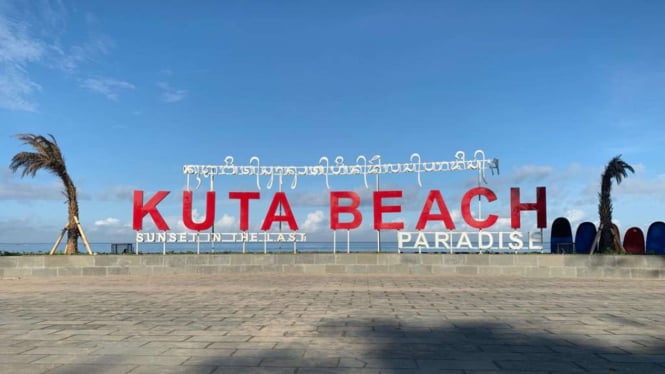Raja Ampat, Papua: The Enchanting Paradise of Indonesia
Introduction
Raja Ampat, a remote archipelago nestled in the Indonesian province of Papua, is a hidden gem that has captured the hearts of travelers and nature enthusiasts worldwide. Known for its unrivaled marine biodiversity, pristine coral reefs, and lush landscapes, Raja Ampat offers an unforgettable experience for those seeking the beauty of nature in its purest form. In this article, we'll embark on a journey to explore the captivating world of Raja Ampat, a destination that truly defines the essence of paradise on Earth.
1. Natural Beauty and Biodiversity
Raja Ampat is renowned for its unparalleled natural beauty, both above and below the water's surface. The region boasts one of the highest levels of marine biodiversity in the world, making it a haven for divers, snorkelers, and marine biologists.
Marine Marvels:
a. Coral Reefs: Raja Ampat's coral reefs are teeming with life, including colorful fish, vibrant corals, and unique marine species. b. Marine Species: The waters surrounding Raja Ampat are home to over 1,500 species of fish and 700 species of mollusks, making it a mecca for marine enthusiasts. c. Rare and Endemic Species: The region is a sanctuary for rare and endemic creatures, such as the recently discovered "walking" epaulette shark.
2. Island-Hopping Adventures
Raja Ampat consists of more than 1,500 islands and islets, each offering a unique and breathtaking experience. Island-hopping is a popular activity that allows travelers to explore pristine beaches, hidden lagoons, and untouched wilderness.
Island Highlights:
a. Wayag Island: Famous for its iconic karst formations and picturesque viewpoints that offer panoramic views of the archipelago. b. Misool: Home to vibrant coral gardens, underwater caves, and stunning limestone cliffs. c. Fam Islands: Known for their crystal-clear waters and diverse marine life, making it an excellent spot for snorkeling.
3. Indigenous Culture and Traditions
Beyond its natural splendors, Raja Ampat is home to a rich and diverse indigenous culture. The local Papuan communities have preserved their traditions, arts, and way of life for generations, providing visitors with an opportunity to experience authentic and vibrant cultural heritage.
Local Experiences:
a. Traditional Villages: Visiting villages like Arborek and Sawinggrai offers a glimpse into the daily lives of the indigenous people. b. Traditional Music and Dance: Witness mesmerizing performances of traditional Papuan music and dance. c. Local Crafts: Purchase handmade crafts and artifacts as souvenirs, including intricately woven mats and wood carvings.
4. Sustainable Tourism and Conservation
Raja Ampat is committed to preserving its natural wonders and cultural heritage. Sustainable tourism practices are encouraged to protect the delicate ecosystem, ensuring that future generations can continue to marvel at the region's beauty.
Conservation Initiatives:
a. Marine Protected Areas: A significant portion of Raja Ampat's waters is designated as marine protected areas to safeguard the coral reefs and marine life. b. Eco-Friendly Resorts: Many accommodations in the area follow eco-friendly practices, such as using renewable energy and minimizing waste. c. Local Community Involvement: Indigenous communities actively participate in conservation efforts, with some villages managing their marine reserves.
5. Adventure Activities
For adventure seekers, Raja Ampat offers a plethora of activities beyond diving and snorkeling. Hiking, bird watching, and exploring hidden caves and waterfalls are just a few of the land-based adventures that await visitors.
Adventure Highlights:
a. Trekking: Explore the lush forests and limestone formations on guided treks, taking in the breathtaking landscapes. b. Birdwatching: Raja Ampat is a birdwatcher's paradise, with over 300 species of birds, including the stunning red bird of paradise. c. Kayaking: Paddle through mangroves and secluded lagoons, allowing for an up-close connection with the natural environment.
6. Getting to Raja Ampat
While Raja Ampat's remoteness adds to its allure, reaching the archipelago requires some travel planning. The main gateway is Sorong, a city in West Papua. From Sorong, visitors can take a ferry or a liveaboard boat to explore Raja Ampat's treasures.
Travel Tips:
a. Flights: Sorong is accessible by domestic flights from major Indonesian cities like Jakarta and Bali. b. Liveaboards: Many tourists opt for liveaboard dive cruises, allowing them to explore multiple dive sites and islands. c. Entry Permits: Ensure you have the necessary permits, such as a Marine Tourism Entry Permit, to explore Raja Ampat.
Conclusion
Raja Ampat, Papua, is a destination that transcends superlatives. Its mesmerizing beauty, diverse marine life, vibrant culture, and commitment to conservation make it a true paradise for those who seek an unspoiled natural wonder. Raja Ampat is not just a place to visit; it's a destination to be experienced, cherished, and preserved for generations to come.



.jpg)

No comments:
Post a Comment